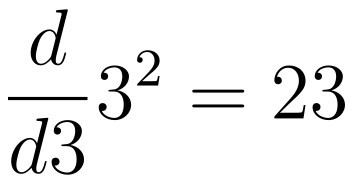views
d3/d3 ^2 =23. It's a visual pun and a math joke playing on the concept of derivatives. Since 3^2
is a constant (9), its derivative with respect to any variable would typically be 0. However, by treating the 'd' and '3' as separate characters, it humorously suggests a different interpretation.

This image presents a mathematical expression that serves as a clever visual pun and a classic math joke: .
To understand the humor, one must first recall the fundamental rule of calculus regarding derivatives of constants. The derivative of any constant (a number that does not change) with respect to any variable is always zero. In this expression, 32 evaluates to 9, which is a constant. Therefore, mathematically, the derivative of 32 with respect to any variable, say x, would be .
However, the joke plays on the notation d3d. Instead of interpreting this as a standard derivative with respect to a variable, it encourages a mischievous interpretation where the "d" from the numerator and the "d" from the denominator cancel out, leaving "332". If one then reads the remaining terms as a sequence of numbers, the "3" from the denominator, followed by the "3" from the base of the exponent, and then the "2" from the exponent, it forms the number 23.
This pun works because it visually manipulates the symbols of a derivative operation to create an entirely different, non-mathematical result. It's a favorite among math enthusiasts who appreciate the play on notation and the subversion of mathematical rules for comedic effect. It highlights the importance of precise interpretation in mathematics while offering a chuckle to those familiar with calculus.




















Comments
0 comment